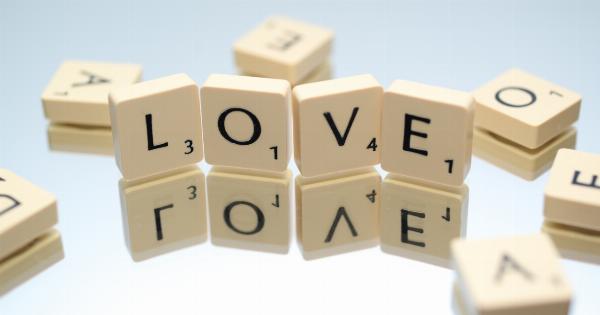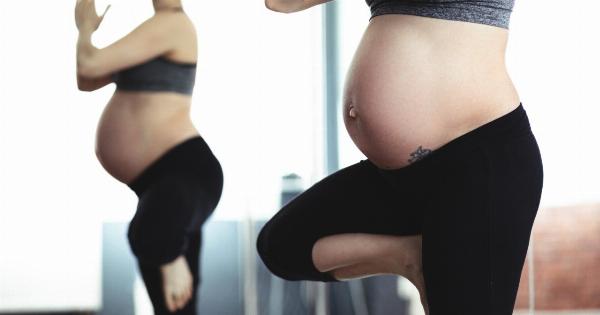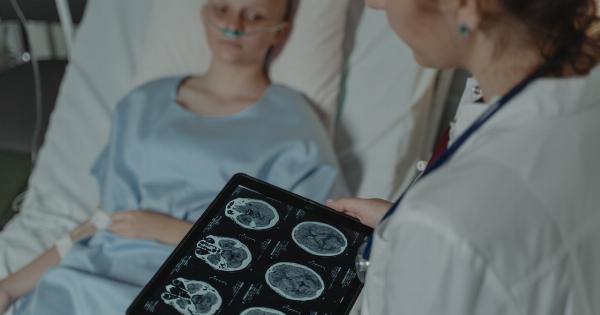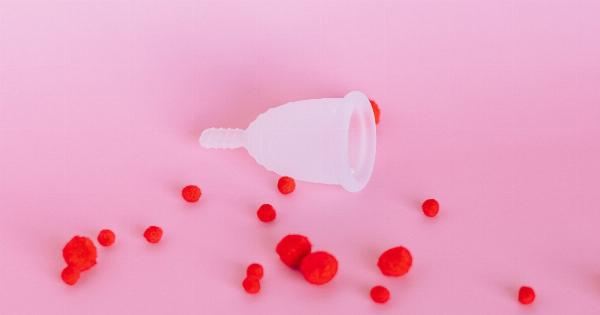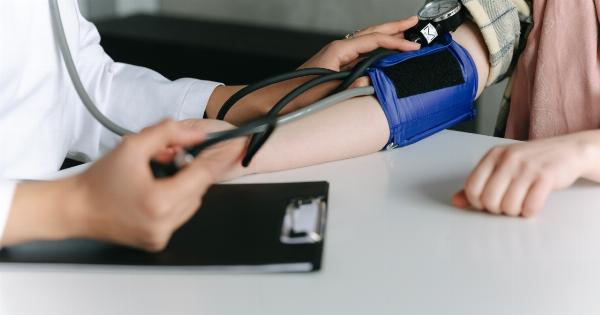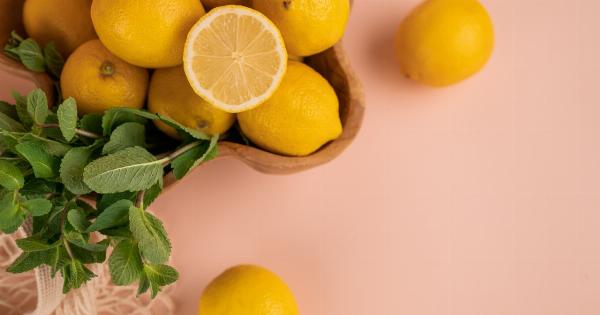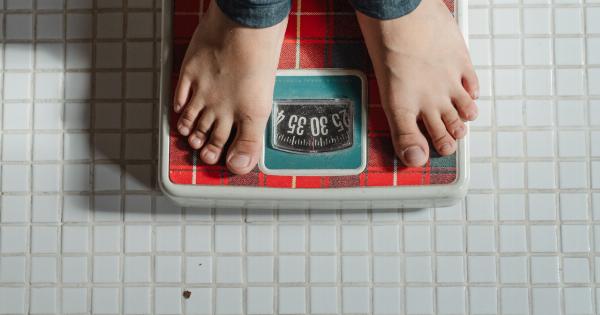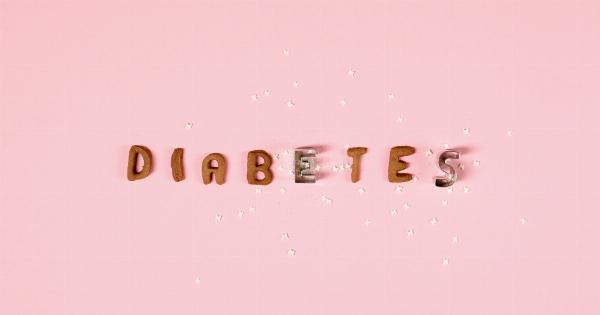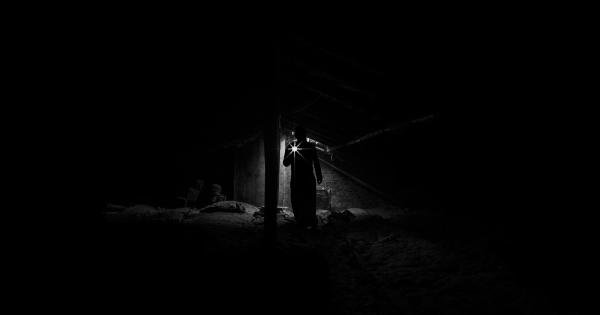High blood pressure (HBP) is a condition that affects millions of people worldwide. It is also known as hypertension, and it is characterized by elevated levels of blood pressure in the arteries.
If left uncontrolled, high blood pressure can lead to serious health conditions such as stroke, heart attack, kidney disease, and even death. That is why it is important to recognize the signs of high blood pressure and take appropriate steps to prevent or manage it.
What is High Blood Pressure?
High blood pressure refers to the force of blood pushing against the walls of the arteries as it flows through the body. This force is caused by the pumping of the heart, which creates pressure on the arteries.
Blood pressure is measured in millimeters of mercury (mmHg), and it is expressed as two numbers, systolic and diastolic. The systolic pressure is the top number, and it represents the force of blood against the arteries when the heart beats. The diastolic pressure is the bottom number, and it represents the force of blood against the arteries when the heart is at rest.
Normal blood pressure is typically defined as a reading of less than 120/80 mmHg. High blood pressure is diagnosed when the reading is consistently higher than 130/80 mmHg.
However, it is important to note that blood pressure levels can vary throughout the day, and a diagnosis of high blood pressure should be confirmed by multiple readings over time.
Signs and Symptoms of High Blood Pressure
Most people with high blood pressure do not experience any noticeable symptoms, which is why it is known as the “silent killer.” However, there are some signs and symptoms that may indicate high blood pressure:.
Headaches
Headaches are a common symptom of high blood pressure, although they are not a reliable indicator. Some people with high blood pressure may experience headaches, while others may not.
Dizziness
Dizziness or lightheadedness can be a symptom of high blood pressure, especially if it is accompanied by other symptoms such as shortness of breath or chest pain.
Nausea
Nausea or vomiting can be a sign of high blood pressure, although it is more commonly associated with other conditions such as the flu or food poisoning.
Nosebleeds
Nosebleeds can be a sign of high blood pressure, especially if they occur frequently or are accompanied by other symptoms such as headaches or dizziness.
Shortness of Breath
Shortness of breath can be a symptom of high blood pressure, especially if it is accompanied by other symptoms such as chest pain or lightheadedness.
Chest Pain
Chest pain can be a symptom of high blood pressure, although it is more commonly associated with other conditions such as heart attack or angina.
Vision Problems
Vision problems such as blurred vision or difficulty seeing can be a sign of high blood pressure, although they are not a common symptom.
Facial Flushing
Facial flushing or redness can be a sign of high blood pressure, although it is more commonly associated with other conditions such as menopause or alcohol consumption.
Blood in Urine
Blood in the urine can be a sign of high blood pressure, although it is more commonly associated with other conditions such as kidney disease or bladder infection.
Pounding in the Ears
Pounding in the ears or a sensation of echoing can be a symptom of high blood pressure, especially if it is accompanied by headache or dizziness.
Why is High Blood Pressure Dangerous?
High blood pressure is dangerous because it puts extra strain on the heart and blood vessels. Over time, this can lead to serious health conditions such as:.
Stroke
A stroke occurs when the blood supply to the brain is interrupted, either by a blood clot or a burst blood vessel. High blood pressure can damage the blood vessels in the brain, increasing the risk of stroke.
Heart Attack
A heart attack occurs when the blood supply to the heart is interrupted, usually by a blood clot. High blood pressure can damage the blood vessels in the heart, increasing the risk of heart attack.
Kidney Disease
High blood pressure can damage the blood vessels in the kidneys, reducing their ability to filter waste from the blood. Over time, this can lead to kidney disease or even kidney failure.
Vision Loss
High blood pressure can damage the blood vessels in the eyes, increasing the risk of vision loss or blindness.
Arterial Disease
High blood pressure can damage the arteries throughout the body, increasing the risk of arterial disease. This can lead to a higher risk of heart attack, stroke, and other health conditions.
Can You Lower Your Blood Pressure?
Yes, you can lower your blood pressure through a combination of lifestyle changes and medical treatments. Some lifestyle changes that can help lower blood pressure include:.
Diet
A healthy diet that is low in salt and saturated fats can help lower blood pressure. Foods that are rich in potassium, such as fruits and vegetables, can also be helpful.
Exercise
Regular exercise, such as walking or swimming, can help lower blood pressure. Aim for at least 30 minutes of moderate-intensity exercise most days of the week.
Weight Loss
If you are overweight or obese, losing weight can help lower blood pressure. Even a small weight loss can make a big difference.
Reducing Stress
Stress can raise blood pressure, so finding ways to reduce stress can be helpful. This can include relaxation techniques such as deep breathing, meditation, or yoga.
Reducing Alcohol Intake
Drinking too much alcohol can raise blood pressure, so reducing or eliminating alcohol intake can be helpful. Stick to no more than one drink per day for women, and no more than two drinks per day for men.
Quitting Smoking
Smoking can raise blood pressure and increase the risk of heart disease and stroke. Quitting smoking can help reduce blood pressure and improve overall health.
When to See Your Doctor
If you are experiencing any of the symptoms of high blood pressure, or if you have a family history of high blood pressure, it is important to see your doctor. They can perform a blood pressure test and recommend appropriate treatment if needed.
Even if you do not have any symptoms, it is still a good idea to have your blood pressure checked regularly, especially if you are over the age of 40 or if you have other risk factors for high blood pressure.
Conclusion
High blood pressure is a common and potentially dangerous condition that affects millions of people worldwide. While it may not have any noticeable symptoms, it can cause serious health complications if left untreated.
Recognizing the signs of high blood pressure and taking appropriate steps to prevent or manage it can help reduce the risk of these complications and improve overall health.





